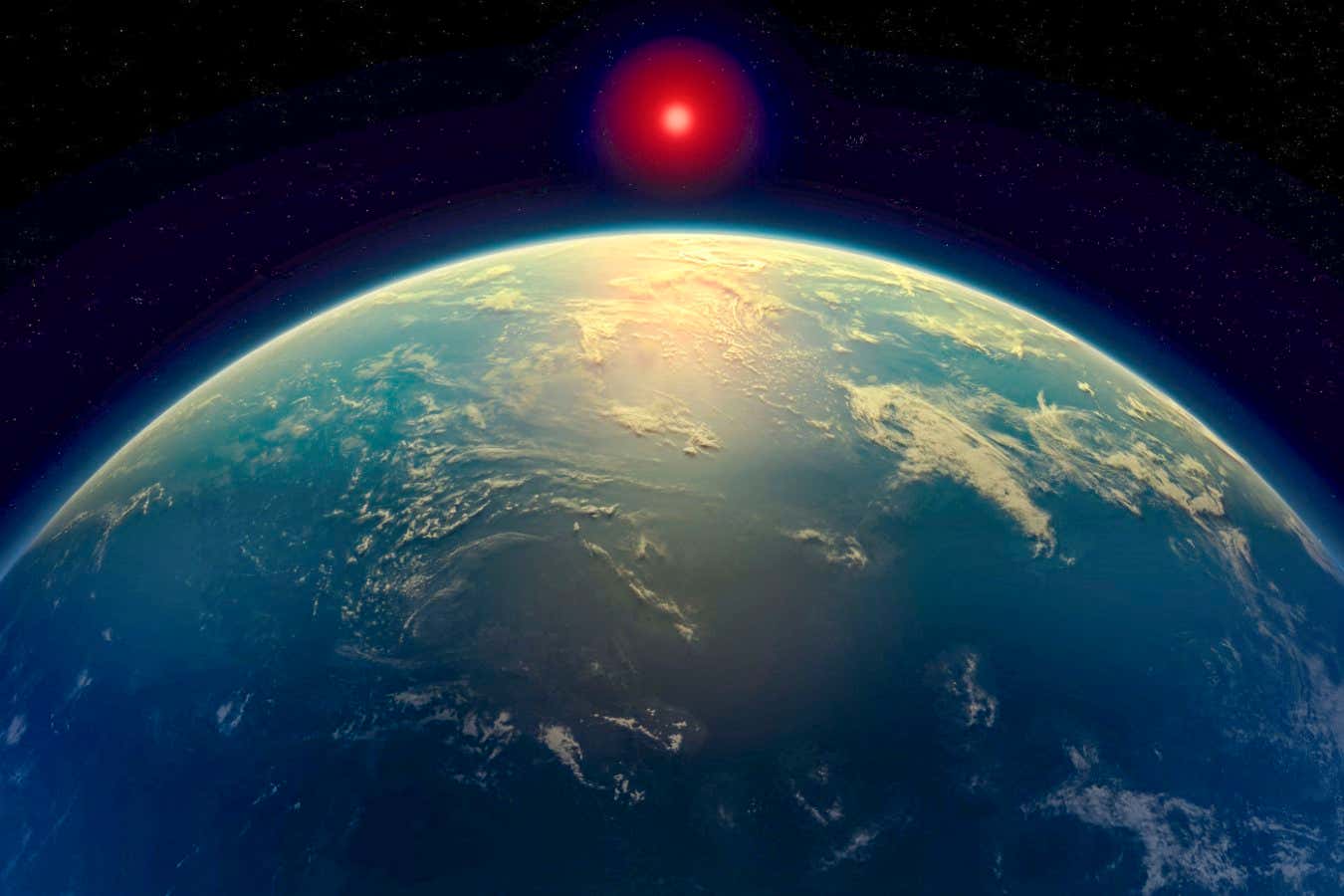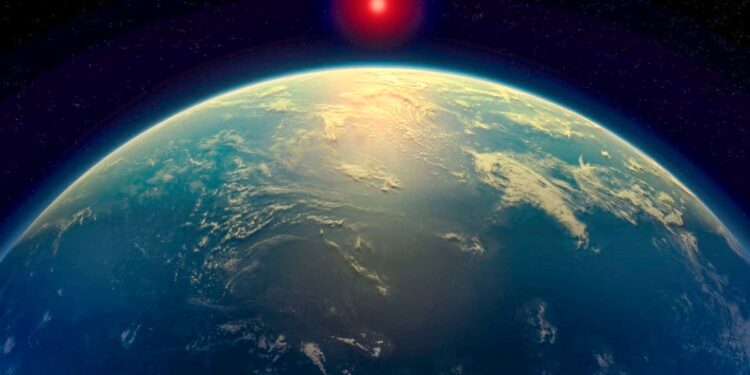
An artist’s impression of the exoplanet K2-18b
A. Smith/N. Mandhusudhan
Hopes of finding alien life on planet K2-18b are rapidly fading, as new observations appear to show no detectable evidence of the biomolecule previous studies had seen hints of. Most scientists agree this shows earlier claims were premature, but one of the researchers behind the previous finding argues that the new data in fact shows stronger evidence than prior observations.
In April, Nikku Madhusudhan at the University of Cambridge and his colleagues claimed that the planet K2-18b, a a rocky planet larger than Earth that is around 124 light years away, contained hints of the molecules dimethyl sulphide (DMS) and dimethyl disulphide (DMDS) in its atmosphere. On Earth, these molecules are produced only by life. At the time, Madhusudhan said these were the “first hints we are seeing of an alien world that is possibly inhabited”.
However, when other researchers later analysed this same data from the James Webb Space Telescope (JWST) using different statistical models, they found no strong evidence for the presence of these molecules. But Madhusudhan and his colleagues also reanalysed their data more comprehensively, which he told New Scientist made him only “more confident” that DMS was the best explanation for the data. Without new observations of the planet, astronomers couldn’t agree on whether there was evidence for life on K2-18b.
Now, Renyu Hu at the California Institute of Technology and his colleagues have teamed up with Madhusudhan and his group to analyse new JWST observations of K2-18b. They found no statistical evidence of a detection. “The paper does not provide conclusive evidence for the existence of this molecule in the atmosphere,” says Hu.
Madhusadhan, Hu and their colleagues used JWST’s near-infrared camera to look at the light from K2-18b’s star, which, after passing through the planet’s atmosphere, can tell us about what molecules exist in the atmosphere. This camera looked at a different wavelength of light than the mid-infrared measurements that were used for the previous analysis in April. They then tried to explain the data using several different models of K2-18b’s atmosphere, each with different assumptions, such as ones that included different molecules or where K2-18b’s atmosphere was filled with water vapour.
Some of the models that included DMS could explain the data slightly better than models without it, but this wasn’t always true, and in no case did the statistical evidence pass the threshold for what scientists can confidently call a detection. “This model dependency just speaks to the fact that it is a very weak signal, if there is any signal at all,” says Hu. “I would just exercise caution.”
Madhusudhan agrees that we don’t have enough evidence for a detection, but he also argues that it is fairer to compare this data with previous observations from JWST’s near-infrared camera taken in 2023, rather than the data with the mid-infrared instrument taken in April, in which case the evidence for DMS looks stronger. “Purely statistically speaking, based on what we are reporting in the paper, the data objectively is showing slightly higher evidence for DMS,” says Madhusudhan.
“There could still be other molecules that are masquerading as DMS,” he says, but there is some feature in the signal caused by an unexplained molecule, which he thinks is best explained by DMS. “But we can still obviously not make a robust claim.”
“This paper is very clear in saying that there is no evidence for dimethyl sulphide. There is no statistical evidence for any of these gases,” says Luis Welbanks at Arizona State University. Sara Seager at the Massachusetts Institute of Technology feels similarly, saying that the level of statistical significance the team reported “is not considered a detection”.
“We seem to be coming to the end of the debate on whether DMS is present in detectable levels in the [K2-18b] atmosphere, as the increased precision has not helped to detect it at a higher significance,” says Jake Taylor at the University of Oxford.
In another blow to the claims of a biosignature, Hu and his team found that for certain hydrogen-rich atmospheres on planets like K2-18b, there are chemical pathways to produce DMS without the presence of life. “This is helping us to narrow down which molecules can be exclusively a biosignature within exoplanet atmospheres, and it appears these models rule out DMS as an exclusive biosignature,” says Taylor.
However, he adds that further observations with JWST’s mid-infrared instrument, which was used for the observations in April, might give us more detailed information, as it targets a different region of light where a DMS feature, as well as other complex molecules, could be detectable.
Something that astronomers can agree on, however, is that the planet is rich in water. Hu and his team found strong evidence for the presence of methane and carbon dioxide, which implies the existence of water, says Hu. However, it still isn’t possible to say whether this exists as oceans or as water in the atmosphere, or if it is locked within the planet’s interior, he says.

The world capital of astronomy: Chile
Experience the astronomical highlights of Chile. Visit some of the world’s most technologically advanced observatories and stargaze beneath some of the clearest skies on earth.
Topics:
Source link : https://www.newscientist.com/article/2489984-signs-of-alien-life-on-exoplanet-k2-18b-have-all-but-vanished/?utm_campaign=RSS%7CNSNS&utm_source=NSNS&utm_medium=RSS&utm_content=home
Author :
Publish date : 2025-07-28 10:00:00
Copyright for syndicated content belongs to the linked Source.










